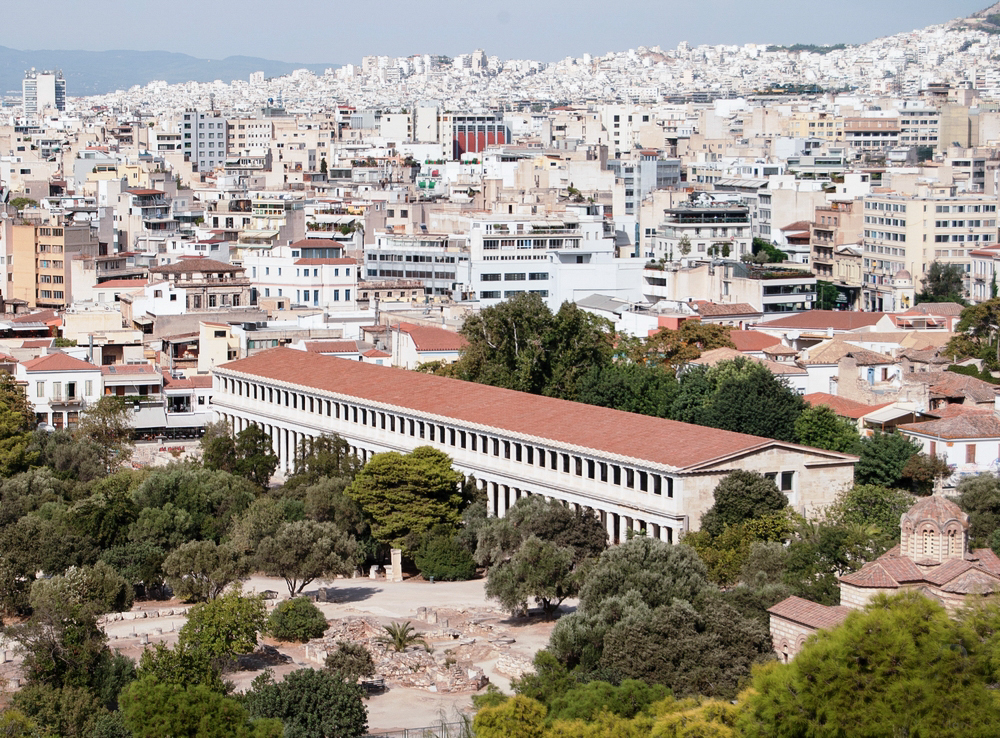Stoa of Attalos- Museum of Ancient Agora
The facade of the ground floor of Stoa of Attalos has 45 Doric columns and 22 Ionic ones, in the interior.
Location
Timeline
Modern and Contemporary era (1821 - )
1953 Start of restoration of the American School of Classical Studies after a donation by John Davison Rockefeller Jr.
1956 Completion of restoration. The inauguration of the restored stoa and the museum took place on September 3.
2003 The renovation of the museum took a year in view of the 2004 Athens Olympic Games.
Ottoman era (1453- 1821)
Byzantine era (331 AC- 1453)
Roman era (30 BC- 330 AC)
267 A.D. Destroyed by the Heruli and embodied to the city walls.
Hellenistic era (322- 31 BC)
Built in the 2nd century BC.








Share